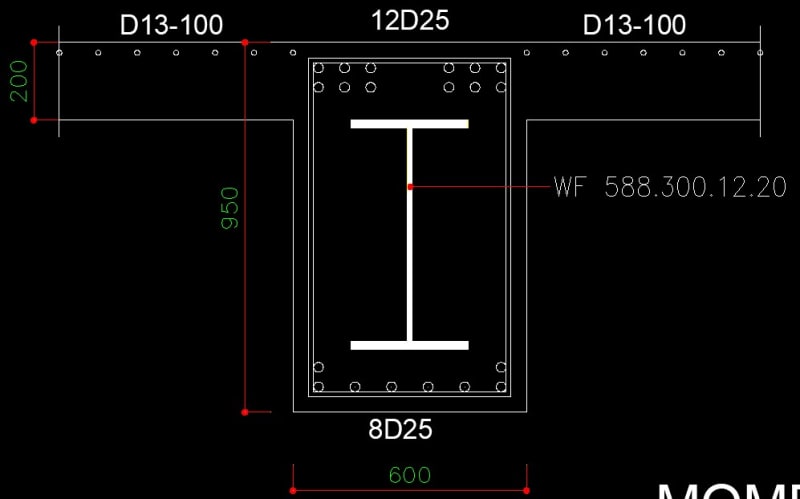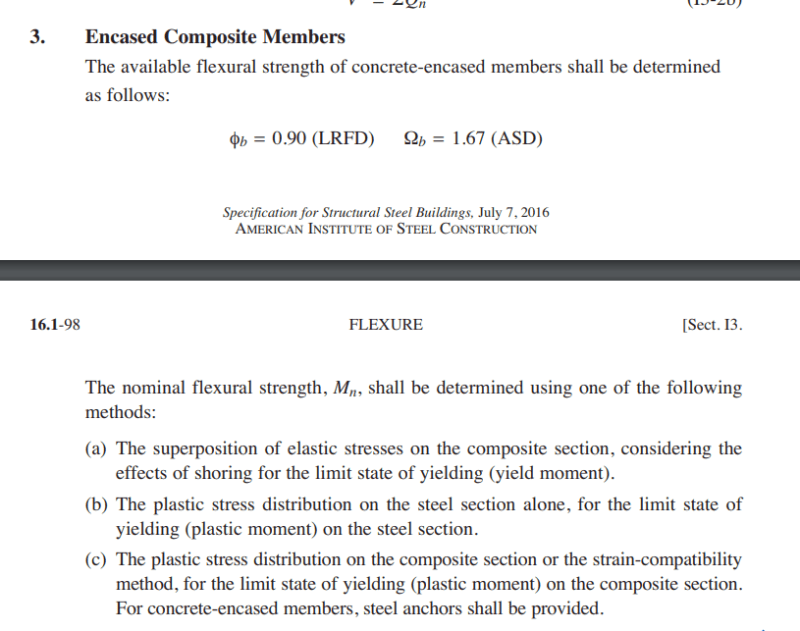Hello. I want to ask about the theory of encased steel beam in concrete. I have an I wide flange steel (dimension 588x300x12x20) encased in a concrete beam (600x950mm). I have a screenshot of the section below.

If I want calculate the moment capacity:
1. Do I have to consider the principals of LRFD design of reinforced concrete which are : the compression strain limit of the concrete beam is 0.003, check if the steel has yielded (to make sure the beam is under-reinforced), and if the portion of web or flange is not yet yield I have to use the fs (stress corresponding to the strain)...?
2. Or, do I assume it is designed like a typical composite beam with concrete slab, which is the steel section calculated using plastic stress distribution?
I am leaning towards the first option because it is like an usual reinforced concrete beam with rebar, but what makes me confused is that the steel section will not achieve the maximum capacity because we limit the strength by the strain distribution diagram, whereas if there is no concrete encasement, the steel profile alone can achieve plastic stress distribution...and, there is still an issue with over-reinforcing the concrete beam.
But if I choose the second option, what will happened to the concrete if I ignored it during my design. Will it have a large crack first, so that the steel beam can act freely to achieve the plastic moment capacity..?
I will appreciate your thoughts about this. Thank you for all your help.

If I want calculate the moment capacity:
1. Do I have to consider the principals of LRFD design of reinforced concrete which are : the compression strain limit of the concrete beam is 0.003, check if the steel has yielded (to make sure the beam is under-reinforced), and if the portion of web or flange is not yet yield I have to use the fs (stress corresponding to the strain)...?
2. Or, do I assume it is designed like a typical composite beam with concrete slab, which is the steel section calculated using plastic stress distribution?
I am leaning towards the first option because it is like an usual reinforced concrete beam with rebar, but what makes me confused is that the steel section will not achieve the maximum capacity because we limit the strength by the strain distribution diagram, whereas if there is no concrete encasement, the steel profile alone can achieve plastic stress distribution...and, there is still an issue with over-reinforcing the concrete beam.
But if I choose the second option, what will happened to the concrete if I ignored it during my design. Will it have a large crack first, so that the steel beam can act freely to achieve the plastic moment capacity..?
I will appreciate your thoughts about this. Thank you for all your help.



